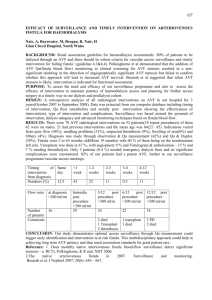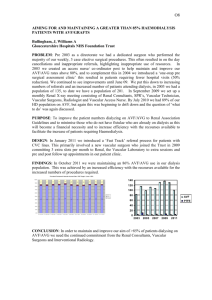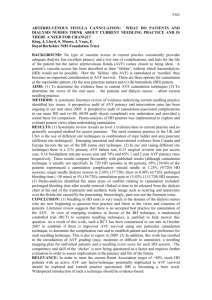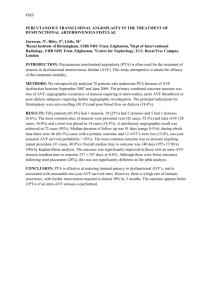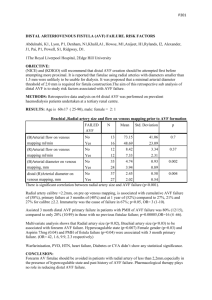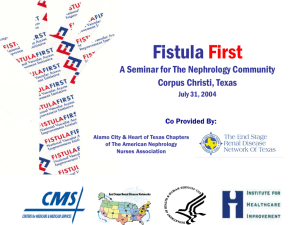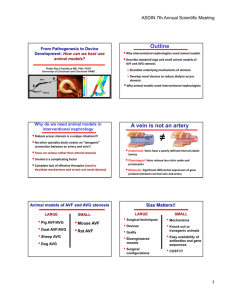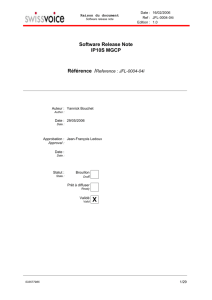AVF Quick Reference Guide - (ESRD) National Coordinating Center
advertisement
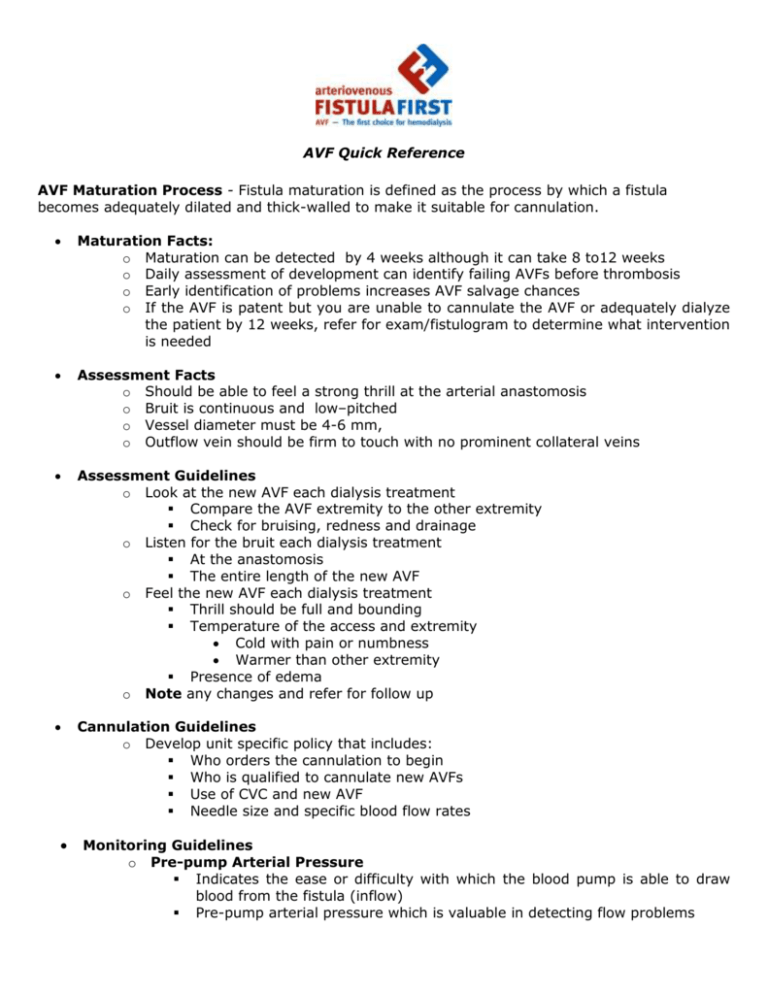
AVF Quick Reference AVF Maturation Process - Fistula maturation is defined as the process by which a fistula becomes adequately dilated and thick-walled to make it suitable for cannulation. Maturation Facts: o Maturation can be detected by 4 weeks although it can take 8 to12 weeks o Daily assessment of development can identify failing AVFs before thrombosis o Early identification of problems increases AVF salvage chances o If the AVF is patent but you are unable to cannulate the AVF or adequately dialyze the patient by 12 weeks, refer for exam/fistulogram to determine what intervention is needed Assessment Facts o Should be able to feel a strong thrill at the arterial anastomosis o Bruit is continuous and low–pitched o Vessel diameter must be 4-6 mm, o Outflow vein should be firm to touch with no prominent collateral veins Assessment Guidelines o Look at the new AVF each dialysis treatment Compare the AVF extremity to the other extremity Check for bruising, redness and drainage o Listen for the bruit each dialysis treatment At the anastomosis The entire length of the new AVF o Feel the new AVF each dialysis treatment Thrill should be full and bounding Temperature of the access and extremity Cold with pain or numbness Warmer than other extremity Presence of edema o Note any changes and refer for follow up Cannulation Guidelines o Develop unit specific policy that includes: Who orders the cannulation to begin Who is qualified to cannulate new AVFs Use of CVC and new AVF Needle size and specific blood flow rates Monitoring Guidelines o Pre-pump Arterial Pressure Indicates the ease or difficulty with which the blood pump is able to draw blood from the fistula (inflow) Pre-pump arterial pressure which is valuable in detecting flow problems Pre-pump AP should not be more negative than – 250 mm/Hg Excessively negative pre-pump AP may be the earliest indication of AVF dysfunction AP more negative than –250 mm/Hg causes o Decrease in the delivered blood flow o Inadequate dialysis o Hemolysis References : Cannulation of the Arteriovenous Fistula DVD (2007) Chapter 2: Assessment of the New AVF for Maturity Chapter 3: Protocol for New AVF Cannulation National Kidney Foundation K/DOQI Guidelines for Vascular Access 2006 “This educational item was produced through the AV Fistula First Breakthrough Initiative Coalition, sponsored by the Centers for Medicare and Medicaid Services (CMS), Department of Health and Human Services (DHHS). The content of this publication does not necessarily reflect the views or policies of the DHHS, nor does mention of trade names, commercial products, or organizations imply endorsement by the U.S. Government. The author(s) assume full responsibility for the accuracy and completeness of the ideas presented, and welcome any comments and experiences with this product.”
